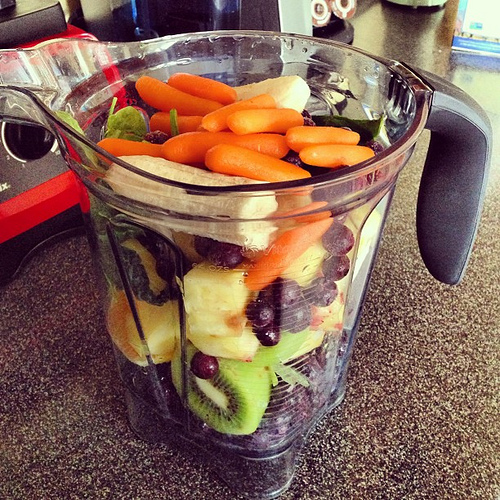Have you recently spent $500 on a blender, or maybe $175 on running shoes or a wristband fitness tracker?
Even if you haven’t, there are plenty of people who have. Market data shows the demand for products that help maintain health and wellness is growing, and that growth, in turn, is driving the product design industry.
“People are more aware of their health than ever, and they’re spending money accordingly—especially young GenY adults,” says izzy+ Founder Chuck Saylor, noting the Vitamix blender as an example.
According to a Business Insider article (December 24, 2013), Vitamix “…has tripled its workforce in the last two years as its popularity among health-conscious consumers has surged, with sales growing 52% last year.” The growth, at least in part, can be traced to the rising number of fitness buffs and health-conscious eaters, who are clearly willing to buy a $300-$650 blender whose brand revolves around health.
“If consumers are investing money in their wellbeing, that means innovators and designers are paying more attention than ever, too,” Saylor says.
Some fitness design niches, like running shoes, have been big business for decades. Nike began producing its innovative, “swoosh”-clad shoes in the 1970s, and they’ve been innovating and pushing the boundaries of running shoe design since. Today, a variety of brands compete, with running shoes that combine functional design and technological advancements (costing $175 and more, and weighing under 7 oz).
A more recent segment of the fitness design industry revolves around technology, such as digital body monitors and fitness trackers like FitBit. (During this year’s izzy+ Valentine’s promotion we even gave away FitBit Flexes, to coordinate with our focus on wellness.) An article about the biggest fitness tech trends predicts continued growth: “The number of companies and amount of competition in the fitness and wellness tech space give me great hope that we’ll continue to see a lot of innovation and integration in this space.”
At izzy+, wellbeing via human-centered design has been a focus since Saylor started the company in 2001. But none of our products has been more health-focused than our most recent product releases, Wabi and Nikko seating. Barbara Hoogenboom, a physical therapist and professor at Grand Valley State University, worked closely with designers Saylor and Sava Cvek, who drew on extensive anatomical research to engineer a chair that promotes “bottom-up sitting.” The seat pan design is engineered to support proper pelvic alignment, tilting the pelvis slightly forward, keeping it balanced from side to side, and reducing pressure points on the “sit bones.”
“Our position on the design of the whole Wabi and Nikko seat system came purely from physical therapy,” says Saylor. “Design, technology, and science all converge in this chair.”
So much research went into the design of these chairs because how we sit clearly matters—not just in terms of reducing back pain, but also for increasing our ability to focus, innovate, and be creative. Adults in office-oriented vocations spend more time sitting each day than they spend doing anything else—we average 9.3 hours of sitting a day, compared to 7.7 hours of sleeping (which leaves just 7 hours for anything else). Saylor says a healthy sitting posture, combined with regular movement throughout the day, is key to maintaining health and wellbeing at desk-based jobs.
In an Office Insight article about Active Design, Joan Blumenfeld of Perkins + Will suggests that every effort to engineer more movement into our days is worthwhile.
“Most of the best principles for design…encourage physical activity through small, incremental steps that help raise consciousness about a more healthy lifestyle in general, and a more active one at work or school, in particular.”
So here’s to your health and wellbeing—bottoms up!
* * * * *
For more information on how sitting impacts health, check out this recent Washington Post article and infographic, and to learn more about how Wabi and Nikko can improve your overall wellbeing, head to our website.
Photo at the top of the post by AForestFrolic
Photo below, the stool-height Nikko chair with the NeoCon Gold-winning Nemo Bar


